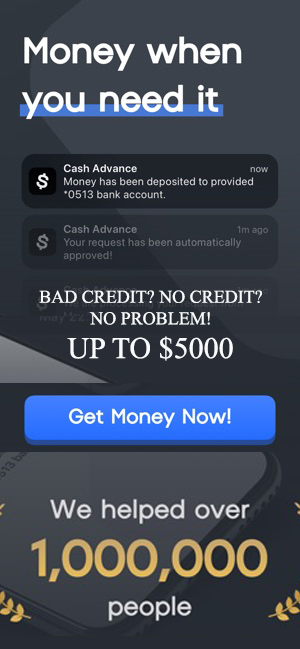Key takeaways
- To discover the total business loan cost, calculate the loan’s principal and interest over the repayment term to figure out the monthly repayment.
- A short repayment term can lower interest, but long terms have manageable payments.
- Use a calculator to compare loan costs before settling on a loan.
Finding the cash to cover the cost of running a business is a common issue among business owners. According to the Federal Reserve’s 2025 Report on Employer Firms, 56 percent of firms reported struggling to pay operating expenses and 51 percent had to navigate uneven cash flow issues in 2024. To deal with these financial challenges, many business owners turn to business loans. But business loans aren’t free.
When taking out a business loan, you’ll need to consider the total and monthly costs of the loan to determine whether your business can manage repayments. It’s vital that you take out enough to cover the business expense or expansion, but not more than you need as you will pay interest on the total loan amount.
You’ll need to consider costs like origination fees, accrued interest and additional fees can add up to increase business loan costs.Know the factors that impact loan costs to find the best business loan. Consider loan terms, interest rate, and loan type as you calculate the potential cost of a business loan.
How much will a business loan cost?
The cost of a business loan varies based on the interest rates, length of the repayment term and any fees charged. Calculate your monthly payment using our business loan calculator to see if you can manage the monthly repayment – before you apply for the loan.
Even a slight increase in interest or APR could add thousands of dollars to your overall loan costs. Understanding a loan’s amortization schedule allows you to better compare loan options and make financial plans for repayment.
For example, if you borrow $150,000 with strong credit at an 8 percent APR for five years, your monthly payment would be $3,041.46, with a total interest cost of $32,487.55. The same loan with subprime credit could come with a 25 percent APR. At this interest rate, you would pay $4,402.70 each month with a total interest cost of $114,161.91.
1. Interest rate
The interest rate is the price you pay to borrow money, usually calculated as a percentage of the amount you are borrowing. Many people are quoted an annual percentage rate (APR) when applying for a loan. APR factors in other fees that make up your payment.
While you may have an interest rate of 5 percent, for example, your total APR could be 5.25 percent. That total means you’re paying an additional quarter percentage point in fees.
Current business loan interest rates
Interest rates can vary widely with different kinds of loans or credit levels. Here’s a look at the typical range of interest rates for different loans:
What influences interest rates?
Your exact interest rate depends on many factors, including the type of loan, your collateral and your personal and business credit history. It can also depend on the prime rate, which is an interest rate banks use as a foundation for setting rates. Lenders offer the lowest interest rates to prime borrowers with the strongest credit and financial picture.
Bankrate insight: Interest rates forecast for 2025
The Fed hasn’t cut interest rates in 2025 to date, with its last rate cut marked in December 2024. In its meeting in July, the Fed opted to keep current interest rates steady in an attempt to restrict the market amid uncertainty, particularly uncertainty around tariffs. However, experts expect the Fed to cut rates sometime this year. The next Fed meeting will take place in September 2025.
Is a small business loan a fixed or variable interest rate?
Small business loans can come with either fixed or variable interest rates. You’ll want to read the fine print of the loan agreement to understand the type of interest rate you’re offered.
Fixed rates are rates that remain unchanged throughout the life of the loan. These can be helpful for small businesses trying to control costs because they keep the cost of the loan the same throughout its term.
However, some loans come with variable rates which can rise during the life of the loan. The benefit of variable rates is that the rate may start out lower than a fixed-rate loan. Yet the downside: your monthly repayment can rise if the lender chooses to raise the interest rate due to market conditions. You may see variable rates with some term loans, lines of credit and business credit cards.
How to get the best business loan interest rate
Since the interest rate directly affects how much you pay for the loan, you’ll want to work to get this rate as low as possible. Ways to lower your interest rate include:
- mprove your financial profile. Lenders determine the interest rate offered based on your business’s financial strength, looking at both your revenue history and your credit score. If you have a poor credit score, take the time to build your business credit so that you can qualify for lower rates, if possible. Having strong revenue will also help the lender approve you and may lead to lower rates, especially if the loan amount is only a small percentage of your revenue.
- Offer collateral. Most lenders offer lower interest rates for secured business loans than for unsecured loans. That’s because the collateral helps the lender recoup some or all of its costs if you fail to make payments. In return for the security, the lender rewards you with lower rates.
- Compare multiple lenders. No matter your financial picture, you can prequalify with multiple lenders to see which one offers you the lowest rates.
2. Factor rates
Some loans might charge interest as a factor rate. Instead of using a percentage, factor rates use a decimal like 1.10 or 1.40 that gets multiplied by the entire loan amount. You may see factor rates used for business loans accessible to borrowers with bad credit, such as lines of credit and merchant cash advances.
You typically pay the entire loan amount plus factor rate, whether or not you repay the loan early. Factor rates are known for converting to high interest rates, so compare the total loan costs carefully with other loans to make sure you’re getting the best deal.
Should you avoid loans with factor rates?
In short, avoid loans with factor rates if possible, but you might use them if you’re a bad credit borrower with limited options. Loans with factor rates typically have higher fees than traditional business loans, but they are more accessible to bad credit borrowers. Convert the factor rate to an annual interest rate to determine how much the loan will cost. This cost won’t include any additional fees, so consider these in your calculation, too. The cost can be high, so consider other options for bad credit business loans before opting for a loan with a factor rate.
3. The amount you qualify for
How much you borrow affects the total borrowing costs for the loan because the interest rate is calculated on the principal loan amount. The exact amount you qualify for will depend on your business finances, credit history and the type of loan you’re applying for.
Check out the typical minimum and maximum loan amounts you could get with different loans.
|
Business loan |
Typical loan amounts |
|
Term loan |
$5,000 to $5 million |
|
Business line of credit |
$1,000 to $250,000 |
|
Equipment loans |
$10,000 to $500,000 |
|
Microloan |
Up to $50,000 |
|
Merchant cash advance |
$1,000 to $2 million |
|
SBA loan |
Up to $5.5 million |
Types of business loans to consider
When comparing business loans, consider the type of business loan that you can qualify for that will offer you the lowest cost. Types of business loans include:
- Term loan. This loan offers a loan amount that you repay over a specific amount of time, such as one to 10 years.
- Business line of credit. Much like a business credit card, this loan grants you a preset amount that you can borrow anytime during the draw period. You don’t have to borrow the full amount, and you only pay interest on the amount you borrow. Most lines of credit are revolving, so the credit limit replenishes as you repay the loan. In other words, you can borrow from the line again if you need it in the future.
- Equipment loan. This loan is a term loan designed for businesses to use to buy equipment. The loan is secured by the equipment as collateral. Lenders often offer lenient eligibility requirements and low interest rates.
- Microloan. This loan functions like any other business loan, but is only offered in small loan amounts, such as $50,000. Microlenders often serve businesses that don’t qualify for traditional business loans, such as startups or business owners with bad credit.
- SBA loan. SBA loans are business loans backed by the U.S. Small Business Administration. They offer low maximum interest rates and long repayment terms, making them an attractive loan option for small businesses.
Alternative business financing options
If you can’t qualify for a traditional business loan, consider these alternatives:
- Grants. Grants offer small businesses funding that you do not have to repay, making it ideal for businesses tight on cash. You can find grants through federal, state or local government and some corporations. However, grants are highly competitive and take time for you to discover whether your business will receive the grant.
- Business credit cards. This type of loan gives you a preset credit limit that you can borrow from at any time. You pay interest on the amount you use, although interest rates may be higher than other types of business loans, such as 18 percent to 30 percent. As you repay the loan, you can borrow from the credit card again for future purchases.
- Crowdfunding. Crowdfunding allows you to raise funds from multiple investors interested in helping your business grow. While you can accept donations that you don’t have to repay, you can also reward investors with the product or equity in your business. Some platforms like Kiva also allow you to get a crowdfunded loan up to $15,000 that you repay within a few years. Crowdfunding platforms accept businesses of all kinds, including startups and business owners with poor credit.
- Merchant cash advance. Not technically a business loan, you can get approved for a merchant cash advance with bad credit and low revenue. You then repay the MCA with a percentage of your credit and debit card sales. However, MCAs come with exorbitant fees, and its payment structure can lead to a cycle of debt that’s tough to break free from. You may want to use MCAs as a last resort.
- Invoice financing. This alternative type of financing allows you to receive up to 90 percent of your outstanding invoices to help you keep cash flowing in your business. The financing company collects fees once your clients pay you. But these fees can be high, and some companies charge more the longer the invoice goes unpaid.
Where to get a small business loan
The lender you choose can make a big difference in how much the business loan costs. There are pros and cons to using each type of lender.
- Traditional banks and credit unions. Traditional banks offer the lowest interest rates, though these rates are reserved for borrowers with the strongest financial profiles. You will need to meet the lender’s requirements to apply. These lenders tend to have stricter requirements than other lenders.
- Online lenders. If you can’t quite qualify with a traditional lender, online lenders offer lenient eligibility criteria. However, they may have higher interest rates, such as 20 percent to 60 percent. Rates vary widely by lender, so you will want to compare options.
- Alternative lenders. These lenders offer alternative loan types like invoice factoring or merchant cash advances. They may have high approval rates when approving loans, but they often charge exorbitant fees.
4. The time it takes to repay the loan
The total interest you pay also depends on how long you take to repay the business loan. In the above example of a $150,000 loan and 8 percent APR, you’d pay $32,487.55 in interest if you pay it over five years. But the same loan would cost $12,818.25 in total interest if paid in two years, saving nearly $20,000 in total loan costs.
Short-term vs. long-term loans
To save money, you can either choose a short-term loan or make extra payments on a long-term loan to pay it off early. Be aware that the lender may charge a prepayment penalty when paying off a loan early.
Short-term loans keep you accountable for paying off the loan in a short time, potentially costing you less in interest. But even the best short-term loans typically charge higher interest rates than a longer term loan.
On the other hand, a long-term loan can offer payments that are more manageable for your budget. The downside is that lenders often tighten lending requirements with longer repayment terms, making them inaccessible to some, like startup businesses. They do so because there’s a greater risk that you could default over a longer time period.
5. Fees
Finally, you want to review the other possible loan fees you may be charged when applying for your business loan. Some lenders keep fees minimal, while others charge high fees that add hundreds or even thousands of dollars to your business loan. Common fees you might run across:
Some fees and costs may be negotiable. If a fee seems excessive, or if another lender you’ve prequalified with doesn’t charge it, talk to the lender about reducing or eliminating the fee before finalizing your loan agreement.
The bottom line
The cost of a business loan varies widely, depending on the type of loan you take out, your lender, the creditworthiness of your company and the additional fees you may be charged.
When comparing loans, you want to review more than just the interest rate or APR. Read the fine print and have your lender explain each fee associated with your loan so you can evaluate the total business loan cost.
Frequently asked questions
Why we ask for feedback
Your feedback helps us improve our content and services. It takes less than a minute to
complete.
Your responses are anonymous and will only be used for improving our website.
Help us improve our content
Read the full article here
















